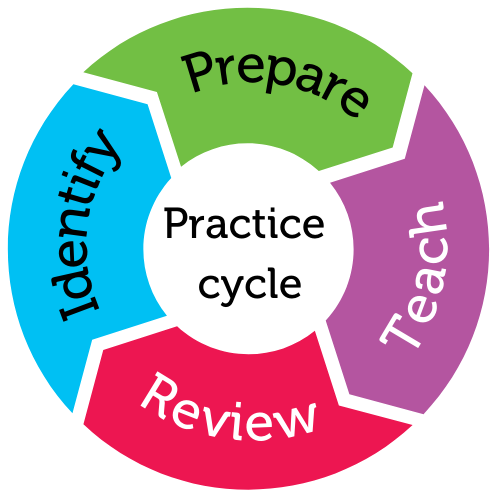
For student year
Helps students to
- make decisions
- build independence
Helps teachers to
- engage students
- encourage independence
Summary
Embedding opportunities for choice in classroom and curriculum tasks can be helpful adjustments for those students who find decision-making stressful or who use inappropriate behaviour to control their environment.
Giving students a degree of autonomy through choices may reduce their need to assert their independence. This can lead to less conflict and inappropriate behaviour in the classroom.
How this practice works
Watch this video to learn more.
Duration 3:34
Australian Professional Standards for Teachers related to this practice
4.1 - support student participation
4.2 - manage classroom activities
4.3 - manage challenging behaviour
For further information, see Australian Professional Standards for Teachers AITSL page
Preparing to teach
Why is this important?
Practicing decision making encourages independence, and builds confidence.
What do I need to consider?
Consider the desired outcome for the lesson: allow some flexibility for students to achieve the objective.
Identify multiple opportunities for student choice-making in your lesson plan:
- within choices – how to complete a particular activity
- when choices – the timing of activities, e.g., when to take a break or whether they spend 5 or 10 minutes on a preferred task
- where choices – the location of activities e.g. outside, under a tree or in the classroom
- whom choices – which students work together on an activity; whether they work in a pair or by themselves
It can be easier to choose between a small number of options rather than having to find one from a seemingly endless array of potential options.
Choose what the student/s will choose between. Offer a maximum of three possible choices. It is important that you provide choices equitable and task suitable.
You must be happy for students to choose any of the choices on offer.
By offering only choices that the teacher is happy with, the teacher remains in control of the class, but the students get a level of autonomy over the lesson. The student then feels they have control over their own choices, therefore reducing the need to act out to gain this control.
Examples
- The objective of a lesson is for the students to write a three paragraph chapter. Allow students to choose where they do it: sitting at their desk, sitting on the floor, in the corridor outside the class.
- There are two tasks in the lesson. These are not dependent on each other. Allow the students to choose which task they would prefer to do first.
It works better if…
-
you present students with a maximum of three options when making a choice
-
you give students as many opportunities to make choices as possible
-
the students are given ample time to process questions and respond
It doesn’t work if…
-
there are too many choices
-
a choice is only given sporadically
-
choices aren't task or age appropriate
In the classroom
Decision making
- Present the students with decisions to be made (in writing and verbally)
- include two to three possible choices during the lesson.
- Give the students adequate time to respond.
- Offer the student support in making the choice if required.
- Reinforce with verbal praise when the student has made a decision.
- Reflect on perceived efficacy of this practice and adjust accordingly.
Practice toolkit
Practice implementation planner template
We know it's not always easy to keep track of what's working and what isn't. So, we've created this template for you to record and reflect on what you're doing to create more inclusive classrooms. The implementation planner contains:
- guidance around goal setting
- a reflection section (what worked, didn’t work, what to change, and next steps)
- prompting questions.
Implementation planner with examples
Set your professional learning goal for:
Embedding opportunities for choice making
Benefits of goal setting
Setting, working towards, and reflecting on goals helps you grow professionally and improve your practice. You can access AITSL learning resources for teachers to learn more about:How to set goals
The Australian Institute for Teaching and School Leadership recommends using the SMART matrix to frame your goal setting.SMART goals refers to goals that are:
- Specific
- Measurable
- Achievable
- Relevant
- Time-phased
Resources
Embedding opportunities for choice making - Practice Brief
Related Practices

Harnessing student interests
TEACHING PRACTICE
For student years
Helps students to
- be more engaged
- focus across topics
This practice is from the core research project
Learning Cycle

